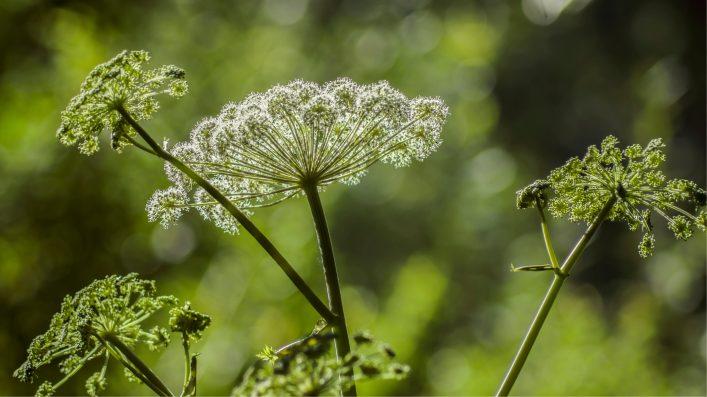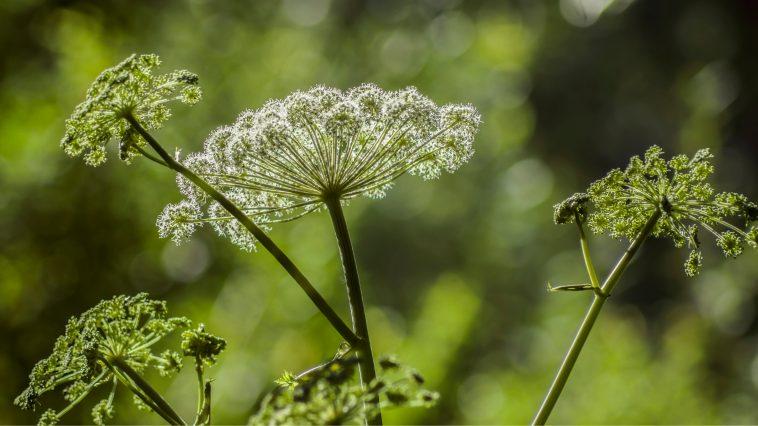Poison hemlock is a highly poisonous plant to both humans and animals. It was introduced to the United States from Europe in the 1800s. Over time, poison hemlock has become widespread in almost every state. It grows along roadsides, fences, vacant lots, and open fields where livestock graze. The toxic plant can also find its way into your yard.
Poison hemlock has several look-alikes. Keep reading to learn how to identify it among the other weeds growing in your yard and get rid of it safely.
How To Identify Poison Hemlock
The hemlock plant typically grows in the spring, but its bloom time can vary each year, depending on the weather conditions. Between May and August, clusters of white flowers appear on the top of the stalks. Each flower consists of five petals.
Hemlock also has a stem with purple spots. The leaves are dark green, fern-like, and finely divided. When crushed, it gives off a strong, musty odor. It can grow up to nine feet tall, with the leaves reaching a length of two feet.
Hemlock Poisoning Symptoms
All parts of the weed—seeds, stems, leaves, flowers, and roots—contain toxic alkaloids that can be fatal if ingested, even in small amounts. Even touching the plant can cause a severe skin reaction.
The symptoms of hemlock poisoning can appear thirty minutes to an hour after ingesting the plant. Common symptoms include muscle pain/weakness, convulsions, trembling, and burning in the digestive tract. In more severe cases, hemlock poisoning may cause respiratory failure and death.
If you experience any of these symptoms after touching or tasting a poison hemlock plant, medical attention should be sought immediately.

Sign up for Chip Chick’s newsletter and get stories like this delivered to your inbox.


